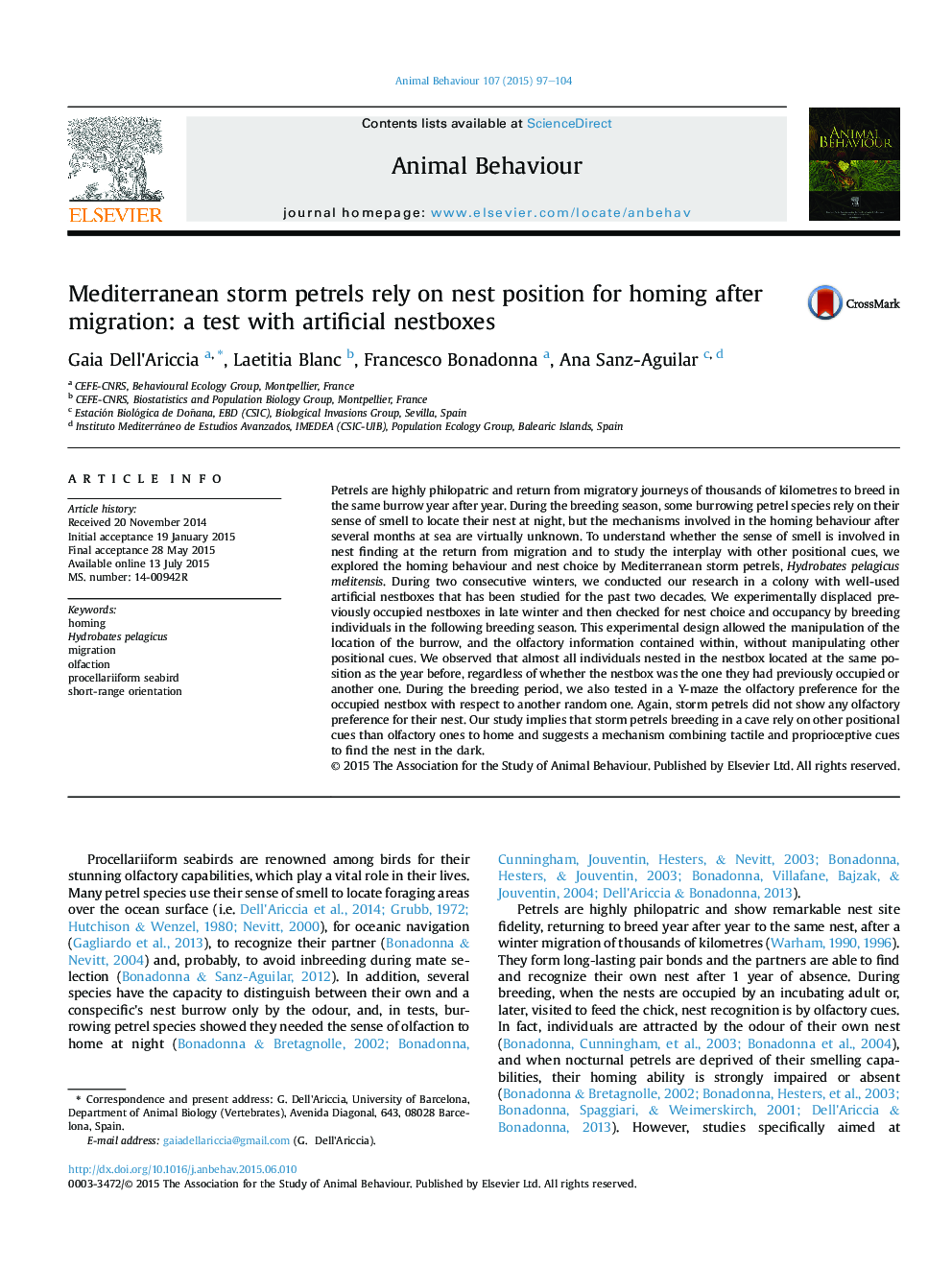| کد مقاله | کد نشریه | سال انتشار | مقاله انگلیسی | نسخه تمام متن |
|---|---|---|---|---|
| 8489708 | 1552221 | 2015 | 8 صفحه PDF | دانلود رایگان |
عنوان انگلیسی مقاله ISI
Mediterranean storm petrels rely on nest position for homing after migration: a test with artificial nestboxes
ترجمه فارسی عنوان
طوفان مدیترانه پس از مهاجرت بر روی موقعیت لانه قرار می گیرد: آزمایش با صندلی های مصنوعی
دانلود مقاله + سفارش ترجمه
دانلود مقاله ISI انگلیسی
رایگان برای ایرانیان
موضوعات مرتبط
علوم زیستی و بیوفناوری
علوم کشاورزی و بیولوژیک
علوم دامی و جانورشناسی
چکیده انگلیسی
Petrels are highly philopatric and return from migratory journeys of thousands of kilometres to breed in the same burrow year after year. During the breeding season, some burrowing petrel species rely on their sense of smell to locate their nest at night, but the mechanisms involved in the homing behaviour after several months at sea are virtually unknown. To understand whether the sense of smell is involved in nest finding at the return from migration and to study the interplay with other positional cues, we explored the homing behaviour and nest choice by Mediterranean storm petrels, Hydrobates pelagicus melitensis. During two consecutive winters, we conducted our research in a colony with well-used artificial nestboxes that has been studied for the past two decades. We experimentally displaced previously occupied nestboxes in late winter and then checked for nest choice and occupancy by breeding individuals in the following breeding season. This experimental design allowed the manipulation of the location of the burrow, and the olfactory information contained within, without manipulating other positional cues. We observed that almost all individuals nested in the nestbox located at the same position as the year before, regardless of whether the nestbox was the one they had previously occupied or another one. During the breeding period, we also tested in a Y-maze the olfactory preference for the occupied nestbox with respect to another random one. Again, storm petrels did not show any olfactory preference for their nest. Our study implies that storm petrels breeding in a cave rely on other positional cues than olfactory ones to home and suggests a mechanism combining tactile and proprioceptive cues to find the nest in the dark.
ناشر
Database: Elsevier - ScienceDirect (ساینس دایرکت)
Journal: Animal Behaviour - Volume 107, September 2015, Pages 97-104
Journal: Animal Behaviour - Volume 107, September 2015, Pages 97-104
نویسندگان
Gaia Dell'Ariccia, Laetitia Blanc, Francesco Bonadonna, Ana Sanz-Aguilar,
